We want to share with all viewers considering using
Alpha-Phonics A Primer for Beginning Readers,
or those currently using it, this accumulation of tips we have learned from users (Through thousands of personal contacts) over the 33 years we have published this systematic, intensive phonics reading instruction book.
 (Every Alpha-Phonics comes with a copy of these Tips)
(Every Alpha-Phonics comes with a copy of these Tips)
Tips from our 33 years of experience – before you start the Lessons –
to make Alpha-Phonics work better for you:
| Dear Parent or Teacher: January 2019
We have published Alpha-Phonics since 1986, 33 years. With almost no changes, it is the same book as in 1986. It has not changed because there is no need to change or “update” it. It is a systematic, intensive phonics reading instruction program that is timeless. It is SIMPLE and EFFECTIVE! Over the years we have had contact with thousands of users of the program and have discussed with them points that will help you in obtaining the best results from it. We would like to share these helpful points before you begin the actual instruction program with your student: THE BOOK IS DIVIDED INTO TWO PARTS: 1.) FRONT: LESSONS FOR THE STUDENT that are in LARGE TYPE that is most suitable for little beginers. 2.) BACK (Begins at page 131) INSTRUCTIONS FOR THE TEACHER that are in standard size type. At the beginning of the Instruction Section are six general pages (131-137) about our alphabetic language and other interesting information. Starting on page 137 is the ORDER OF LESSONS beginning with Lesson 1. There are a total of 128 lessons and they are covered in fourteen surprisingly short pages. But in these fourteen pages you have all the instruction you need to teach the corresponding 128 STUDENT LESSONS in the front section. Those 128 Lessons cover all the 44 phonograms, or sounds, that comprise the entire English language! Lesson one is the longest, taking most of a page. After that, lessons are short; only about a paragraph each. HOW TO TEACH THE LESSONS: You will find it best to read the lesson first yourself and then turn to the corresponding student lesson in the front and try it out for yourself. Even try several lessons for yourself prior to showing the first lesson to your student. This way you will see how simple and easy it is. Hundreds of thousands already have experienced this. DO NOT TRY TO TEACH THE SOUNDS FIRST BEFORE BEGINNING: You do not need to worry about teaching the sounds to your student in advance before you begin with Alpha-Phonics instruction. Doing so does not help. The reason is that the entire program is based on teaching the 44 sounds as you progress through the 128 Lessons, one sound at a time as you go. DO NOT MIX INSTRUCTION PROGRAMS: Doing this can confuse your student. Stick with one program. Put aside any preconceived notions you might have about what you should do, how fast your child might learn, how long it might take, how long to teach each day and all the other things you have previously read or heard. Just do what the Alpha-Phonics Instructions ask you to do and you will almost certainly be amazed at how well your child will do. You will make a schedule that is comfortable both with you and your student. One lesson per day is very good. A slower pace, if needed, is quite alright. If your student is getting along OK, and is not tired, then just keep on going. Some days might not go so well. If so, just put the book down and try another day. ABOUT DICTATION: Dictation is your secret weapon!! It is an amazing helper. By DICTATION we mean for you following each lesson to take a few minutes and have a brief ORAL and WRITTEN spelling session. You read the words learned in the lesson, one at a time, to your student and ask him to spell the words out loud back to you. Then do WRITTEN dictation. You read the words out loud to your student and ask him/her to write them down on paper. Of course point out errors to be corrected. Amazingly, this dictation work helps enormously in getting the phonics reading concept you are teaching firmly implanted in the student’s mind. And you get a big BONUS because you are taking care of SPELLING at the same time, effortlessly as you go. There are over 3,500 words your student can learn in the course of the 128 lessons. When you finish with your Alpha-Phonics program your student will not only be a good reader but also well on the way to being a good speller. ABOUT DYSLEXIA: Over the 33 years probably the question most often asked of us is: “Does my child have dyslexia?” The answer is almost always NO! If you have reason to believe your student is experiencing dyslexia, email us at the Paradigm Co. and we will discuss it: alphaphonics [at] hotmail [dot] com Two most common symptoms are reading from right to left and the confusion in reading the lower case “b” and “d”. A Little Beginner reader is easily trained to read in the correct direction, left to right. As soon as told they are doing it wrong most beginners automatically begin to do it correctly. Teacher running her finger under the words moving left to right as the student reads is a simple solution. Later do the same as they tackle sentences. Soon the student can run his own finger under the words and eventually will not need any such aid. The “b” and “d” mirror look confusion is very understandable and does not indicate dyslexia. The Little Beginner does not know that they stand for different sounds. So just tell them the correct sound for each and practice. There is a special practice lesson to cover this: Lesson 28A. CAN I TEACH MY CHILD COMPREHENSION? Teaching comprehension in recent years has been much ballyhooed. The truth is that if you can’t read well you will not comprehend what you are reading. If you are a good reader you will comprehend what you are reading. It is that simple. Throw away the expensive comprehension “programs” and teach your student to be a good reader with Alpha-Phonics. That will automatically take care of comprehension. SPECIAL AIDS IN THE BACK OF THE BOOK: 1.) Pre-reading Alphabet Exercises Pages 159-168: these are very helpful to get the student familiar with the NAMES (Not sounds) of the letters of the alphabet. To be ready to begin the lessons it is necessary for the student to be reasonably familiar with the NAMES of the letters, both upper case and small letters. 2.) For those students who might have sufficient motor skills to do so you can introduce them to the cursive alphabet found on page 157. TEACHING ADULTS: Adults who may not have received a good reading foundation at an early age (even adults who never had ANY reading instruction) can easily be helped to vastly improve their reading ability with Alpha-Phonics. Another adult who is a reader can easily take an adult who wants to improve throughAlpha-Phonics. It is recommended that the adult teacher/helper be available to aid the adult learner. We caution that Alpha-Phonics is not a “self-teaching” program for any age. While some programs advertise one can learn by themselves we do not make such claims for Alpha-Phonics. WHAT TO DO IF IT “IS NOT WORKING”: It is seldom, but once in a while a parent/teacher finds the program is not working for their child. It is best to stop the lessons and take a break for a while. Sometimes it can be only a week or two, but sometimes it can require taking a break of several months. Work on other subjects like arithmetic in the interim. Sometimes a child is started too young and is not ready to learn to read. Definitely wait a while and try again. It will eventually “click” and you are off and running. Remember you can always email us to ask questions or get help. WHAT AGE IS BEST TO BEGIN? Probably the best age is five or six years old. Occasionally a child is ready even at three, but this is very rare. Do not believe the programs that tell you your infant can learn to read. This is not true. In fact, the Federal Government recently forced such a company to cease advertising its program because it did not work. By the way, girls are often ready a little sooner than boys. Two things are needed for the child to begin a reading instruction program: 1.) A reasonably good knowledge of the names of the letters of the alphabet; 2.) The student having a fairly good speaking voice; good enough that the teacher can understand them when they do oral work. WHAT DO I DO UPON COMPLETING ALPHA-PHONICS? Author Dr. Samuel L. Blumenfeld has suggestions following the last lesson (128) beginning on page 149. At the end of all the lessons parents often ask: “Is there more instruction I need to give my student?” Alpha-Phonics contains everything you need to teach your student. After completing Alpha-Phonics there are two things you should do to enhance overall reading skill: (1.) Have your child read as much as possible. Rather than recent publications, Dr. Blumenfeld suggests older books. Older stories usually have more traditional moral points; newer ones contain “modern” worldviews. (2.) Do dictionary work: encourage your student to always look up an unfamiliar word in the dictionary. This helps expand the vocabulary and as vocabulary expands it enables him or her to more fully understand what they are reading. For complete information on Alpha-Phonics please go to our Alpha-Phonics Website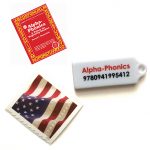 Alpha-Phonics othe Book on Flash Drive 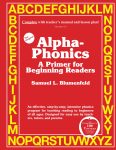 A-P C-S Dec 15 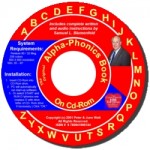 Alpha-Phonics the Book on CDRom
Our MISSION is to provide the most effective, simplest and least expensive 3 R’s teaching materials. Please note the BLACK Horizontal BAR at the top of his Post. You can click to access many sources of information about our Homeschool materials for teaching the Three R’s. There is almost 20 hours of free videos to view including the “24 Reasons to Homeschool.” You can also Like us on Facebook. Thanks! |

 Alpha-Phonics
Alpha-Phonics The Alphabet Song!
The Alphabet Song! Water on the Floor
Water on the Floor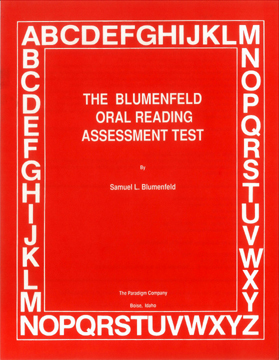 Blumenfeld Oral Reading Assessment Test
Blumenfeld Oral Reading Assessment Test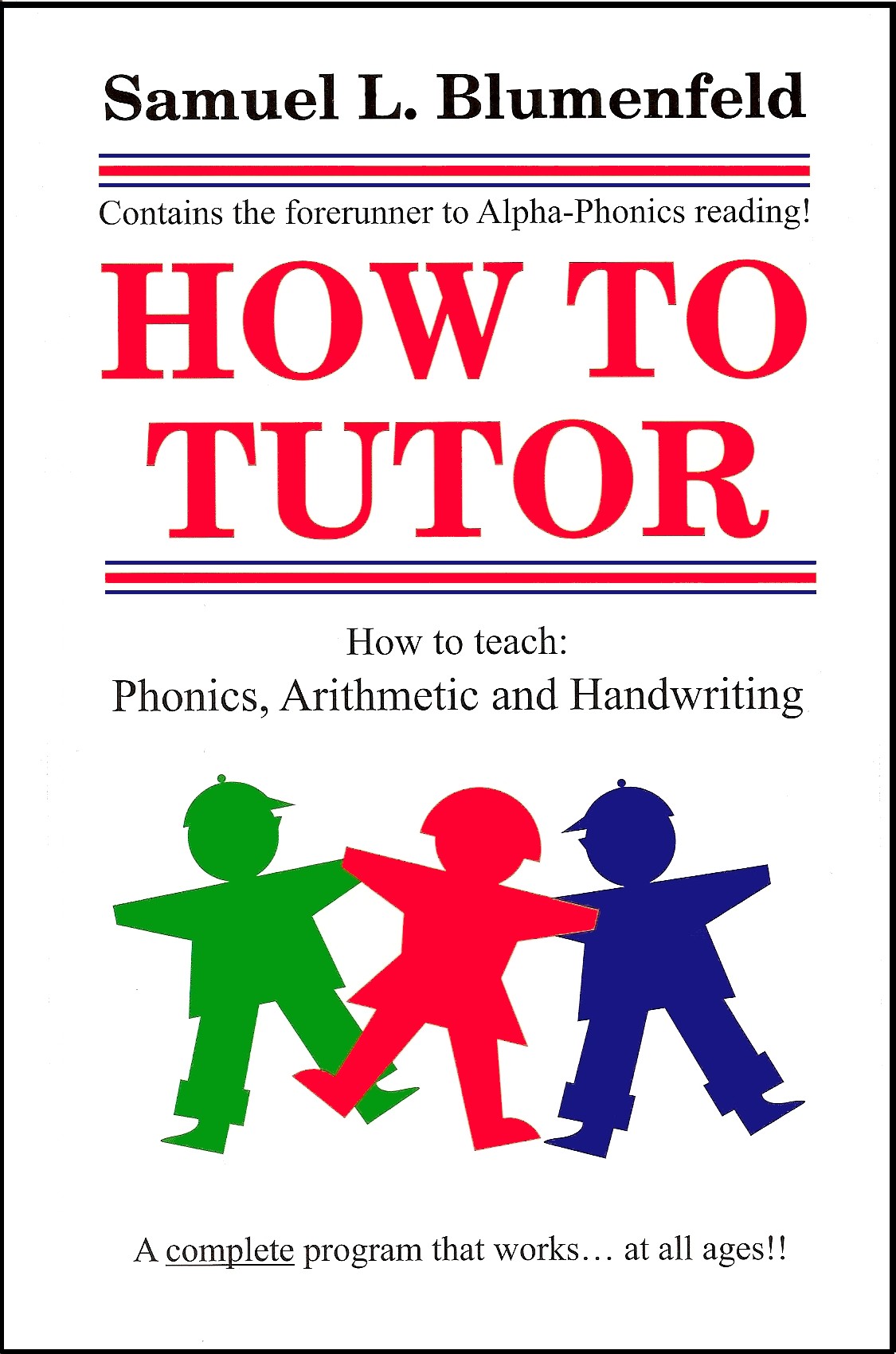 How To Tutor
How To Tutor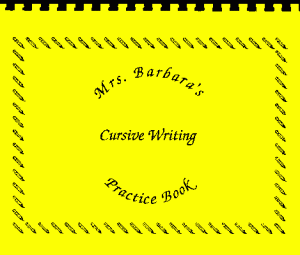 How To Tutor Cursive Handwriting Workbook
How To Tutor Cursive Handwriting Workbook